 W
WAn auditorium is a room built to enable an audience to hear and watch performances. For movie theatres, the number of auditoria is expressed as the number of screens. Auditoria can be found in entertainment venues, community halls, and theaters, and may be used for rehearsal, presentation, performing arts productions, or as a learning space.
 W
WThe term backline is used in popular music and sound reinforcement system contexts to refer to electronic audio amplification equipment and speaker enclosures that are placed behind the band or the rhythm section on stage, including amplifiers and speaker cabinets for guitars, bass guitars and keyboards. Such equipment is often rented or leased by the band or their management, or provided by the venue. Speakers placed at the front of the stage facing the performers are also known as monitor speakers or "foldback". The main speakers facing the audience are sometimes referred to as "front of house speakers".
 W
WBilling is a performing arts term used in referring to the order and other aspects of how credits are presented for plays, films, television, or other creative works. Information given in billing usually consists of the companies, actors, directors, producers, and other crew members.
 W
WA box office or ticket office is a place where tickets are sold to the public for admission to an event. Patrons may perform the transaction at a countertop, through a hole in a wall or window, or at a wicket. By extension, the term is frequently used, especially in the context of the film industry, as a synonym for the amount of business a particular production, such as a film or theatre show, receives.
 W
WIn theater, a brace is a sliding piece of wood or metal with a 'butterfly' winged nut to make it longer or shorter to fit the flat used to stabilize a flat set piece such as a flat. The nut is used, so that it can be changed more quickly than a screw to the floor during a quick change. Usually, a brace is painted black to make it less noticeable to the audience. Braces are often used to form a triangle between two perpendicular items (like a vertical flat and a stage. They can also make a flat piece stronger by forming an X-shape between all four corners. Another way to brace a rectangular flat is to use special braces, called toggles which run at regular intervals, parallel to the short end of the flat, effectively breaking it into many smaller, stronger rectangles.
 W
WA catwalk is an elevated service platform from which many of the technical functions of a theater, such as lighting and sound, may be manipulated.
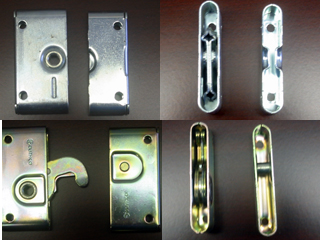 W
WCoffin lock is a slang term for a blind panel connector often used in scenic construction to join together stage decks or scenery in a butt joint. These are two part connectors that draw together and lock. The two most common types are the cam and acceptor and more traditional hook and pin version. These devices generally use a hex key to operate the locking mechanism via a small diameter hole either through the face or rear of the panel. When locked, the considerable mechanical advantage offered by the cam or hook holds the panels tightly together. Coffin locks can be installed directly into a mortise cut into each panel for total concealment except for the locking hole or mounted to the rear of the panels. Many small theatres use stock platforms with coffin locks built into the frames.
 W
WA curtain call occurs at the end of a performance when one or more performers return to the stage to be recognized by the audience for the performance. In musical theatre, the performers typically recognize the orchestra and its conductor at the end of the curtain call. Luciano Pavarotti holds the record for receiving 165 curtain calls, more than any other artist.
 W
WTheater drapes and stage curtains are large pieces of cloth that are designed to mask backstage areas of a theater from spectators. They are designed for a variety of specific purposes, moving in different ways and constructed from various fabrics. Many are made from black or other darkly colored, light-absorbing material. Theater drapes represent a portion of any production's soft goods, a category comprising any non-wardrobe, cloth-based element of the stage or scenery. Theater curtains are often pocketed at the bottom to hold weighty chain or to accept pipes to remove their fullness and stretch them tight.
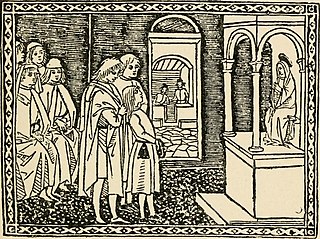 W
WDumbshow, also dumb show or dumb-show, is defined by the Oxford Dictionary of English as "gestures used to convey a meaning or message without speech; mime." In the theatre the word refers to a piece of dramatic mime in general, or more particularly a piece of action given in mime within a play "to summarise, supplement, or comment on the main action".
 W
WA flat or coulisse is a flat piece of theatrical scenery which is painted and positioned on stage so as to give the appearance of buildings or other background.
 W
WA fly system, or theatrical rigging system, is a system of rope lines, blocks (pulleys), counterweights and related devices within a theater that enables a stage crew to fly (hoist) quickly, quietly and safely components such as curtains, lights, scenery, stage effects and, sometimes, people. Systems are typically designed to fly components between clear view of the audience and out of view, into the large opening, known as the fly loft, above the stage.
 W
WA footlight is a theatrical lighting device arranged to illuminate a stage from the front edge of the stage floor in front of the curtain. Originally set in a row of hooded individual enclosures, electric footlights are presently set in troughs across the edge of the stage so that they are not visible to the audience. An indirect footlight uses a light aimed at a reflecting surface to diffuse the illumination.
 W
WThe fourth wall is a performance convention in which an invisible, imagined wall separates actors from the audience. While the audience can see through this "wall", the convention assumes, the actors act as if they cannot. From the 16th century onward, the rise of illusionism in staging practices, which culminated in the realism and naturalism of the theatre of the 19th century, led to the development of the fourth wall concept.
 W
WIn the performing arts, front of house (FOH) is the part of a performance venue that is open to the public. In theatres and live music venues, it consists of the auditorium and foyers, as opposed to the stage and backstage areas. In a theatre, the front of house manager is responsible for welcoming guests, refreshments, and making sure the auditorium is set out properly.
 W
WA ghost light is an electric light that is left energized on the stage of a theater when the theater is unoccupied and would otherwise be completely dark. It typically consists of an exposed incandescent bulb, CFL lamp, or LED lamp mounted in a wire cage on a portable light stand. It is usually placed near center stage. Ghost lights are also sometimes known as equity lights or equity lamps, possibly indicating their use was originally mandated by the Actors' Equity Association.
 W
WA gobo is an object placed inside or in front of a light source to control the shape of the emitted light and its shadow.
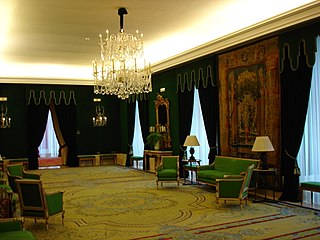 W
WIn show business, the green room is the space in a theatre or similar venue that functions as a waiting room and lounge for performers before, during, and after a performance or show when they are not engaged on stage. Green rooms typically have seating for the performers, such as upholstered chairs and sofas.
 W
WA groundling was a person who visited the Red Lion, The Rose, or the Globe theatres in the early 17th century. They were too poor to pay to be able to sit on one of the three levels of the theatre. If they paid one penny, they could stand in "the pit", also called "the yard", just below the stage, to watch the play. Standing in the pit was uncomfortable, and people were usually packed in tightly. The groundlings were commoners who were also referred to as stinkards or penny-stinkers. The name 'groundlings' came about after Hamlet referenced them as such when the play was first performed around 1600. At the time, the word had entered the English language to mean a small type of fish with a gaping mouth - from the vantage point of the actor playing Hamlet, set on a stage raised around 5 feet (1.5 m) from the ground, the sea of upturned faces may have looked like wide-mouthed fish. They were known to misbehave and are commonly believed to have thrown food such as fruit and nuts at characters / actors they did not like, although there is no evidence of this. They would watch the plays from the cramped pits with sometimes over 500 people standing there.
 W
WThe hanamichi (花道) is an extra stage section used in Japanese kabuki theater. It is a long, raised platform, running left of centre to the stage through the audience, connecting to the main stage.
 W
WA head shot or headshot is a modern portrait in which the focus is on the person. The term is applied usually for professional profile images on social media, images used on online dating profiles, the 'about us page' or a corporate website and promotional pictures of actors, models, and authors.
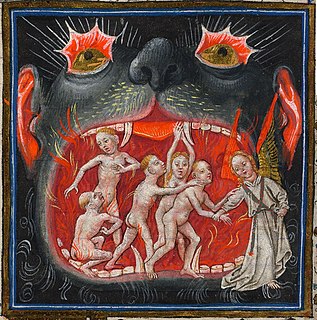 W
WHellmouth, or the jaws of Hell, is the entrance to Hell envisaged as the gaping mouth of a huge monster, an image which first appears in Anglo-Saxon art, and then spread all over Europe. It remained very common in depictions of the Last Judgment and Harrowing of Hell until the end of the Middle Ages, and is still sometimes used during the Renaissance and after. It enjoyed something of a revival in polemical popular prints after the Protestant Reformation, when figures from the opposite side would be shown disappearing into the mouth. A notable late appearance is in the two versions of a painting by El Greco of about 1578. Political cartoons still showed Napoleon leading his troops into one.
 W
WA marquee is most commonly a structure placed over the entrance to a hotel, theatre, casino, train station, or similar building. It often has signage stating either the name of the establishment or, in the case of theatres, the play or movie and the artist(s) appearing at that venue. The marquee is sometimes identifiable by a surrounding cache of light bulbs, usually yellow or white, that flash intermittently or as chasing lights.
 W
WThe word passerelle is a French word that means "footbridge" or "gangway." In the theatre, it refers to a small catwalk that extends from one side of the stage to the other, passing in front of the orchestra pit. Besides increasing the total stage area, this stage design allows performers to be closer to the audience.
 W
WPresentational acting and the related representational acting are opposing ways of sustaining the actor–audience relationship. With presentational acting, the actor acknowledges the audience. With representational acting, the audience is studiously ignored and treated as voyeurs.
 W
W W
WIn a theatre, the prompt corner or prompt box is the place where the prompter—usually the stage manager in the US or deputy stage manager in the UK—stands in order to coordinate the performance and to remind performers of their lines when required. It is traditionally located at stage left.
 W
WA proscenium is the metaphorical vertical plane of space in a theatre, usually surrounded on the top and sides by a physical proscenium arch and on the bottom by the stage floor itself, which serves as the frame into which the audience observes from a more or less unified angle the events taking place upon the stage during a theatrical performance. The concept of the fourth wall of the theatre stage space that faces the audience is essentially the same.
 W
WA rake or raked stage is a theatre stage that slopes upwards, away from the audience. Such a design was typical of English theatre in the Middle Ages and early Modern era, and improves the view and sound for spectators. It also helps with the illusion of perspective: when features of the scenery are made to align with a notional vanishing point beyond the rear of the stage, the rake supports the illusion. These elements of scenery are termed raking pieces.
 W
WA safety curtain is a fire safety precaution used in large proscenium theatres. It is usually a heavy fibreglass or iron curtain located immediately behind the proscenium arch. Asbestos-based materials were originally used to manufacture the curtain, before the dangers of asbestos were widely known. The safety curtain is sometimes referred to as an iron in British theatres, regardless of the actual construction material.
 W
WA scenery wagon, also known as a stage wagon, is a mobile platform that is used to support and transport movable, three-dimensional theatrical scenery on a theater stage. In most cases, the scenery is constructed on top of the wagon such that the wagon, and the scenery it supports, forms a single, integrated structure. Heavy duty casters are mounted to the underside of the platform so that the entire assembly can be quickly moved onstage or offstage, so as to facilitate rapid scenery changes during live productions. Scenery wagons are built in a wide range of sizes, ranging from less than one square foot up to the size of the playing area of the stage.
 W
WIn theatre and performing arts, the stage is a designated space for the performance of productions. The stage serves as a space for actors or performers and a focal point for the audience. As an architectural feature, the stage may consist of a platform or series of platforms. In some cases, these may be temporary or adjustable but in theaters and other buildings devoted to such productions, the stage is often a permanent feature.
 W
WA stage weight or brace weight is a heavy object used in a theater to provide stability to a brace supporting objects such as scenery or to stabilize items such as lighting stands. Ingot shaped stack-able cast iron or cut steel weights are also used as counterweights of fly systems meant to hoist scenery away vertically when not in use. Such metal stage weights have largely replaced the older practice of using sandbag counterweights.
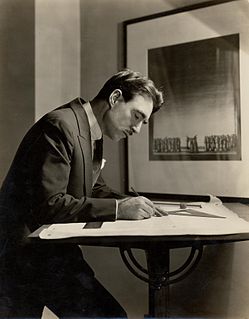 W
WStagecraft is a technical aspect of theatrical, film, and video production. It includes constructing and rigging scenery; hanging and focusing of lighting; design and procurement of costumes; make-up; stage management; audio engineering; and procurement of props. Stagecraft is distinct from the wider umbrella term of scenography. Considered a technical rather than an artistic field, it is primarily the practical implementation of a scenic designer's artistic vision.
 W
WStand-up comedy is a comedy performance and narrative craft whereby a comedian communicates to a live audience, speaking directly to them through a microphone. The performer is commonly known as a comic, stand-up comic, comedian, comedienne, stand-up comedian, or simply a stand-up. Comedians give the illusion that they are dialoguing, but in actuality, they are monologuing a grouping of humorous stories, jokes and one-liners, typically called a shtick, routine, act, or set. Stand-ups may fuse props, music, magic tricks or ventriloquism. Stand-up comedians perform quasi-autobiographical and fictionalized extensions of their offstage selves.
 W
WA tension grid is a type of non-standard largely-transparent catwalk. Tension grids are composed of tightly woven wire rope steel cables that create a taut floor strong enough for technicians to walk on.
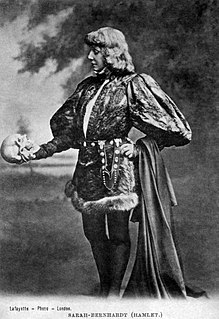 W
WTheatre or theater is a collaborative form of performing art that uses live performers, usually actors or actresses, to present the experience of a real or imagined event before a live audience in a specific place, often a stage. The performers may communicate this experience to the audience through combinations of gesture, speech, song, music, and dance. Elements of art, such as painted scenery and stagecraft such as lighting are used to enhance the physicality, presence and immediacy of the experience. The specific place of the performance is also named by the word "theatre" as derived from the Ancient Greek θέατρον, itself from θεάομαι.
 W
WA theatre in the round, arena theatre or central staging is a space for theatre in which the audience surrounds the stage.
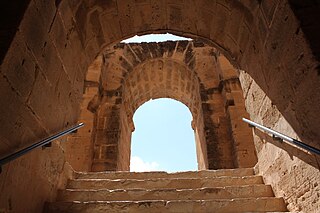 W
WA vomitorium is a passage situated below or behind a tier of seats in an amphitheatre or a stadium, through which big crowds can exit rapidly at the end of a performance. They can also be pathways for actors to enter and leave stage. The Latin word vomitorium, plural vomitoria, derives from the verb vomō, vomere, "to spew forth". In ancient Roman architecture, vomitoria were designed to provide rapid egress for large crowds at amphitheatres and stadia, as they do in modern sports stadia and large theatres.